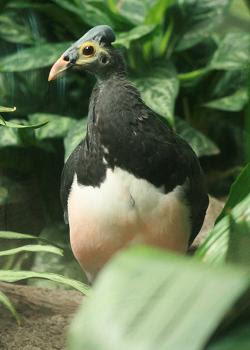On this day, 203 years ago, Charles Robert Darwin was born. And his brilliant theory is
more important today than it has ever been. Evolution; descent with modification; whatever you call it, the idea that species change throughout time, and are all descended from a common ancestor, is one that connects us to the rest of the living world. This is a connection that I've always appreciated, yet there are many out there that refuse to accept it. I've often heard people say "evolution is only a theory", which means they believe it's nothing more than a guess. And if they believe it to be a guess, it's just as likely as any other guess. But in science, a theory is so much more than a guess. It's a body of knowledge, obtained through repeatable observations, that can be used to describe some aspect of Universe to to the best of our ability. Is a scientific theory subject to change? If course it is. As new information is gathered, it can be incorporated into a growing body of knowledge. But the underlying principles stay the same. In this case, species do change over time. They are not fixed. Through the processes of natural selection, mutation, genetic drift, and others, species do change throughout time. If a trait is advantageous, it is passed on to the next generation. If it is not, it gets removed from the population. New species are born, others go extinct. Evolution is more than just a guess. It is a fact. And I think
Darwin Day is a great time to explore this fact in greater detail. A good place to start is at the PBS
Evolution website. Learn about all facets of this theory, from how Darwin began to formulate it over 150 years ago, to the mechanisms that make it possible. This
NOVA program is one of the best on the subject I've seen, and the website has a lot of other interactive features for teachers, students, and the general public. Happy Darwin Day, and enjoy!
.jpg)
.jpg)


























 Alright, boys and girls. I started this little endeavor a month ago. It's time to bring it all together, once and for all. So far in our virtual birding roundup, we've spent the last two parts talking about various families within the order Passeriformes. Which makes sense considering that there are over 100 different passerine families, and they contain more than half of all known bird species (Mayr, 1946). For the most part, the relationships between these families were traditionally defined by morphological characters, and were believed to be fairly well understood. But recently, more and more molecular analysis has begun to show a different phylogeny; one that we still don't have a full picture of. And that's where the next bird from our quiz comes in.
Alright, boys and girls. I started this little endeavor a month ago. It's time to bring it all together, once and for all. So far in our virtual birding roundup, we've spent the last two parts talking about various families within the order Passeriformes. Which makes sense considering that there are over 100 different passerine families, and they contain more than half of all known bird species (Mayr, 1946). For the most part, the relationships between these families were traditionally defined by morphological characters, and were believed to be fairly well understood. But recently, more and more molecular analysis has begun to show a different phylogeny; one that we still don't have a full picture of. And that's where the next bird from our quiz comes in.
